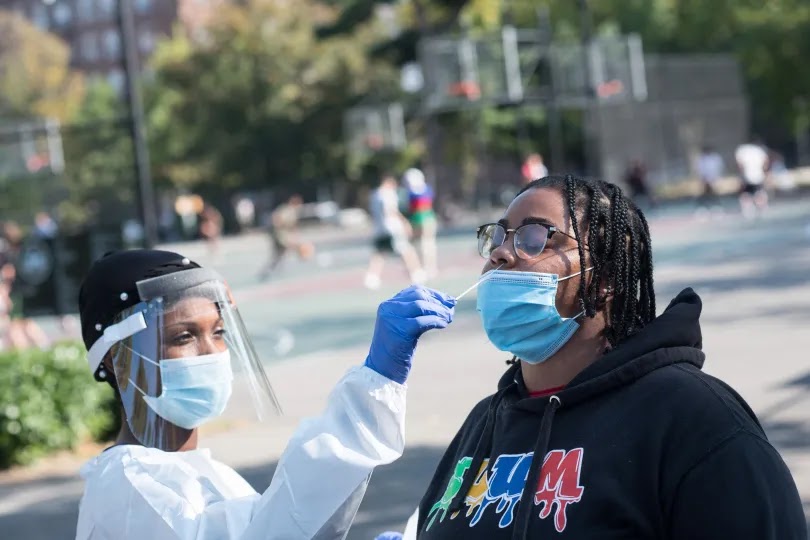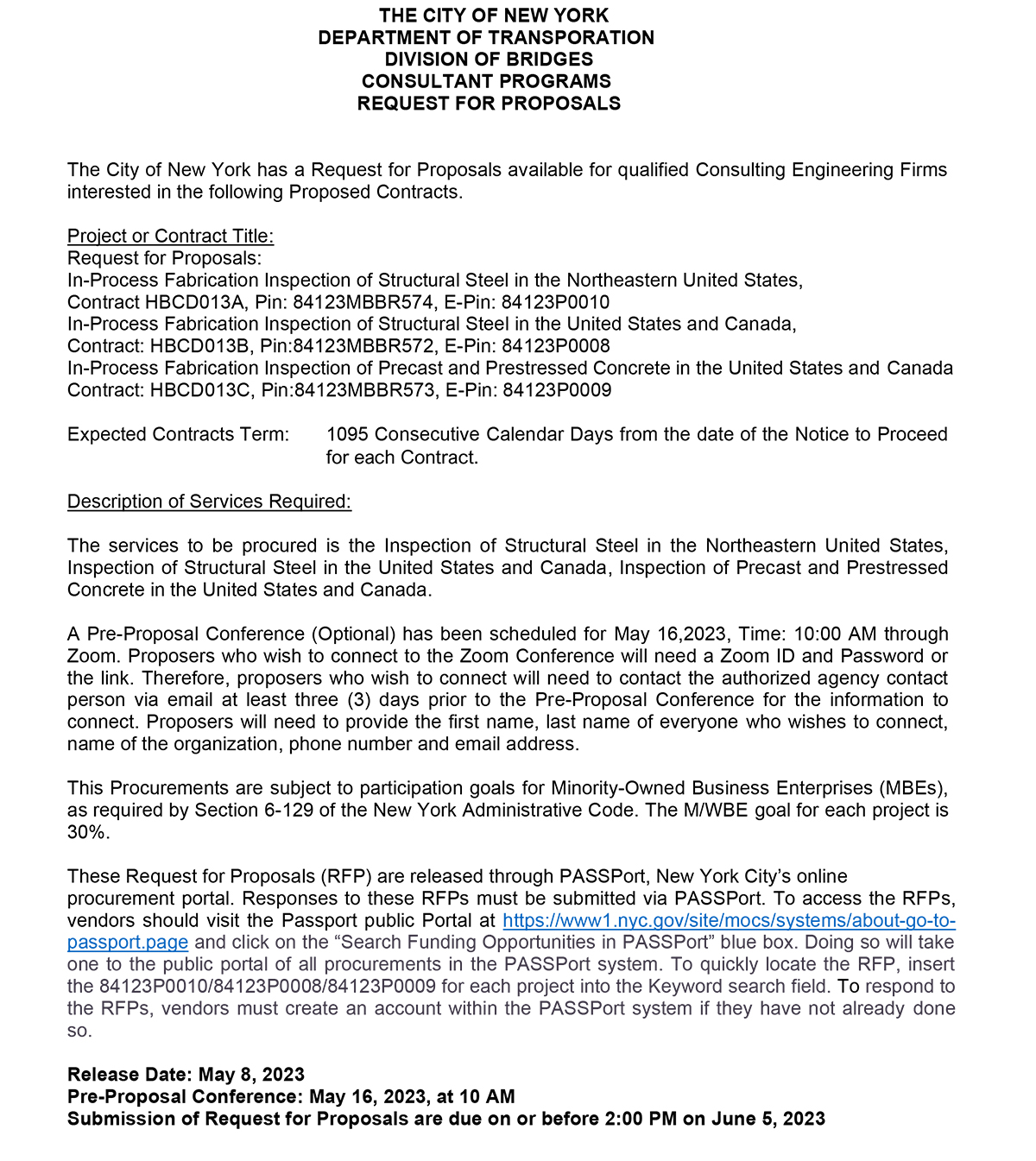Covid Changes Coming This Week
A health worker tests a student for COVID-19 at the beginning of the 2020 school year. | Michael Appleton/Mayoral Photography Office
The COVID Emergency Ends This Week. What Happens Now?
By Rachel Holliday Smith, The City
This article was originally published on by THE CITY
NEW YORK - On Thursday, May 11, the public health emergency declarations in place since the outbreak of the COVID-19 pandemic will end.
Those edicts had given the federal government wide latitude to change or waive previous requirements when it came to health insurance, services, testing, medicines and more.
The rules and regulations stemming from that time are vast and complex, as documented here by KFF, the health policy nonprofit. Some have to do with emergency use authorizations for COVID-19 treatments, liability immunity for health care providers, and how hospitals are paid for treating patients with the virus.
But for most people, the end of the COVID-19 Public Health Emergency, or PHE, means changes to who pays for COVID tests, when doctors can prescribe medicine remotely and how we track COVID-related statistics.
THE CITY spoke with public health experts about what to expect. Here are the highlights about what will — and will not — change after the May 11 end of the public health emergency:
Changing: The Cost of At-Home COVID Tests
After May 11, the cost of your next purchase of at-home COVID tests may not be reimbursed. That’s because the PHE ending also nixes the federal government’s mandate that all at-home COVID tests must be provided at no cost to the patient.
The change is how “most people may feel the effects of the Public Health Emergency ending,” said Juliette Cubanski, deputy director of the Program on Medicare Policy at KFF.
Medicare does not provide coverage for the at-home tests and people must pay out of pocket for them, Cubanski said. Private health insurance may offer coverage, but that’s up to individual insurance companies, which are under no obligation to reimburse or cover the tests.
“That will vary from one insurer to another,” she said.
Importantly, laboratory COVID tests — such as a PCR test ordered by your doctor — will continue to be covered under insurance, even after the end of the PHE. But that requires a doctor’s visit, which could be pricey under certain insurance plans. Or, you could visit a standalone COVID testing or urgent care facility, but those may come with out-of-pocket costs not covered by your insurance.
/cdn.vox-cdn.com/uploads/chorus_asset/file/23115236/122021_covid_test_1.jpg)
Until May 11, people are still able to get their eight free tests per month. Cubanski recommends everyone pick up those boxes while there is still time.
“If they haven’t already gotten them for this month, then it’s not too late,” she said. “And that’s true for people with Medicare, too — they can walk into a pharmacy that’s participating in this program and walk out with their eight free tests.
“The clock is ticking, but it hasn’t expired yet.”
Maybe Changing Later: Doctors Prescribing Remotely
As the world went into lockdown, the PHE had allowed certain flexibilities when it came to seeking health care remotely. For the first time, care providers could prescribe certain controlled substances via telehealth, such as the painkiller oxycodone or the ADHD medicine Adderall.
The ending of the PHE on May 11 would do away with that change and bring back rules that would require patients to physically see a doctor in person to get those medications — but it’s not cut and dried.
The federal Drug Enforcement Agency recently sought to temporarily prolong the telehealth exceptions until it can figure out new rules for the issue, The Washington Post reported. The move comes after the DEA was bombarded with criticism from advocates and caregivers who say reverting to the old way of prescribing would hurt patients.
It’s unclear what individual doctors should do between now and when the DEA creates new rules.
“I think they want to establish some sort of a glide path, away from this — or maybe keep it in place. But whatever they decide to do clearly hasn’t been decided yet,” said Cubanski.
Bruce Y. Lee, professor of health policy and management at the CUNY School of Public Health, said the unclear future of the rule is a familiar feeling to those who have monitored health rules in the pandemic.
“That’s a general concern with May 11: things aren’t completely clear,” Lee said. “This is a classic thing that’s happened throughout the pandemic where there’s a jump to change something — we’ve seen that with the removal of mask requirements, and things like that — but there hasn’t been a plan in place to say, ‘Okay, what’s the transition?’”
Not Changing: Access to Vaccines at No Cost
Something that is not changing on May 11: you should be able to get all COVID vaccines and boosters at no cost. That’s because coverage of vaccines is not tied to the PHE, but to rules that mandate that insurers cover vaccines overall, not just for COVID-19, said Cubanski of KFF.
“That’s important for people who may be interested in getting a vaccine now or when we get around to getting a booster in the fall, if that is indeed what happens,” she said.
Changing: COVID-19 Data
After the May 11 deadline, changes are on the way for how the country tracks COVID-19 cases and transmission. When the PHE ends, federal agencies will no longer have the authority to require COVID-19 data from states, municipalities and individual entities like labs and health departments.
That means that we will no longer have a national-level view on testing outcomes. To Cubanski, that follows from the fact that, for a while now, more Americans have tested at home and not reported that information to anyone.
/cdn.vox-cdn.com/uploads/chorus_asset/file/24223120/112222_22_long_covid_sinai.jpg)
“We’re moving away from the time when we had up-to-date, as-accurate-as-possible information about COVID in terms of cases and community transmission,” she said.
To Lee, that means “more of a patchwork quilt” of data reporting from states and localities, who all capture and maintain their information differently.
“This makes it very difficult to maintain any type of national surveillance system,” he said.
Gov. Kathy Hochul said in a May 5 press release that New York’s daily press updates on key COVID-19 metrics will cease after the PHE ends on May 11. The state Department of Health will continue to report COVID and vaccine data on its tracker while it evaluates whether to make any further changes to COVID-19 data reporting.
THE CITY will update this article with more information as our newsroom gets it. Do you have a question about the end of the COVID-19 Public Health Emergency? Write to us: ask@thecity.nyc.
THE CITY is an independent, nonprofit news outlet dedicated to hard-hitting reporting that serves the people of New York.



















Comments
Post a Comment